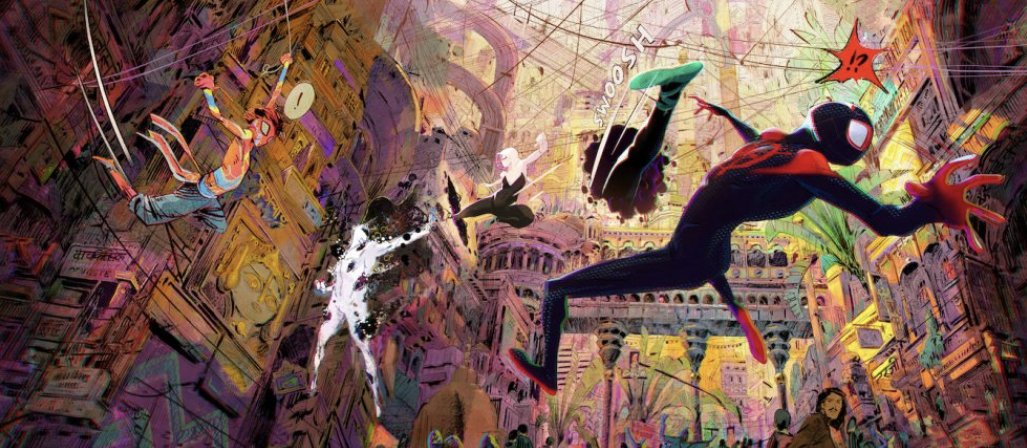I’m actually surprised by how much I liked “Spider-Man: Across the Spider-Verse.” It’s such a pleasant visual experience, to say the least, but this time around the story has been improved.
This animated take on the Marvel superhero is probably the best Spidey movie since Raimi’s “Spider-Man 2.” It’s also the closest a movie has come to making a comic book spring to life. The visual wonders in this sequel are kicked up a notch.
Telling the coming-of-age story of Miles Morales (voiced by Sameik Moore), teenage son to an African-American cop and a Puerto Rican nurse, the film uses the multi-universe format to drive its inventive storytelling.
Now joining in on the fun is Spider-Woman, Gwen Stacy (a playful Hailee Steinfeld), on a trip to other realms. There’s world-hopping including an eye-popping trip to a futuristic Mumbai, not to mention a pitstop in Nueva York, where the Spider Society, led by Oscar Isaac's gloomy Miguel O'Hara, aka Spider-Man 2099, reside.
They’re after The Spot (Jason Schwartzman) an inventively created baddie who turns his body into ink-blot spots that serve as portals into other worlds. Are you still with me? The action speaks for itself, it’s a brazen deluge of pop art colors, and yet, your attention never wanders.
The alternative Spideys, dozens upon dozens of them, all pull off an unexpectedly deft and humane comic touch. However, the real sell are the eye-popping frames, concocted by directors Joaquim Dos Santos, Kemp Powers, Justin K. Thompson and producers Phil Lord and Chris Miller.
‘Across the Spider-Verse’ felt like stepping inside a page-turning graphic novel. At the end of the day, and no disrespect to the folks over at the MCU, animation is the best medium in which to honor the style of the comic book genre.
These creatives have adapted 70-year-old techniques seen in comic artwork into visceral and very modern cinematic visual language.
To capture the feel of this groundbreaking animation the filmmakers had to concoct comic book techniques such as line work, painting and dots to make it look like it was created by hand — the frames have been described by them as "a living painting".
This was achieved by artists taking rendered frames from the CGI animators and working on top of them in 2D. Phil Lord described this style of animation as "totally revolutionary," and that it is.
Prepare to be impressed by this visually groundbreaking work. You’ve never seen anything like it before. [B+]






